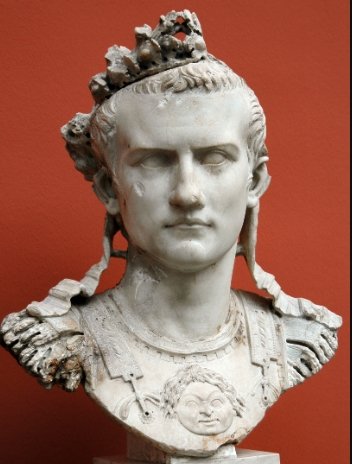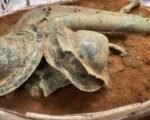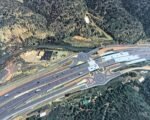The bronze bust of Caligula was cast 2,000 years ago and gifted to the British writer Horace Walpole in 1767, but it seemingly vanished after it was purchased by a collector in the mid-19th century.
Strawberry Hill House — The bust was purportedly recovered from Herculaneum — a town destroyed alongside Pompeii in 79 C.E. — in the 18th century. British writer Horace Walpole famously coined the word “serendipity,” which is “an aptitude for making desirable discoveries by accident.” So it’s appropriate that a curator at his former home, Strawberry Hill House in London, stumbled upon a lost bronze bust of Caligula that Walpole had once owned and cherished — some 200 years after it first went missing. This serendipitous discovery is not only exciting for Strawberry Hill House but also for historians of ancient Rome, who have noted that the bronze bust of the controversial Roman emperor is just one of eight known to exist.

Rediscovering The Bust Of Caligula
According to a statement from Strawberry Hill House, Walpole first acquired the Caligula bust in 1767, when it was given to him as a gift by Horace Mann, the British Envoy to Florence. The bust had purportedly been recovered from Herculaneum, a town destroyed by Mount Vesuvius in 79 C.E. “I gaze on it from morning to night,” Walpole wrote to Mann in May 1767. Acknowledging Caligula’s alleged insanity, Walpole added: “It is more a portrait than any picture I ever saw. The hair and ears seem neglected, to heighten the expression of the eyes, which are absolutely divine, and have a wild melancholy in them, that one forebodes might ripen to madness.”
The Schroder Collection
A close-up of the bust of Caligula, in which Walpole saw an expression that “might ripen to madness.”
But at a Strawberry Hill House sale in 1842, the Caligula bust was purchased by collector William Beckford and subsequently lost — until now. As the Strawberry Hill House statement notes, “ [g]enerations of enthusiasts” have searched for the Caligula bust over the past two centuries using a drawing of the statue that Walpole commissioned from artist John Carter. But it wasn’t until recently that Strawberry Hill House curator Silvia Davoli succeeded in tracking it down. And her success was quite serendipitous. Davoli was scrolling through the family collection of Sir John Henry Schroder when she spotted the bust. Though it was classified as a “possible Renaissance bronze of a youth,” Davoli recognized it from Carter’s drawing.
The Huntington Library
John Carter’s Caligula drawing, which helped identify the lost bronze bust of the Roman emperor.
“Silvia ‘accidentally’ discovered the small bust of Caligula,” Strawberry Hill House explained. “This find was only possible because of her deep knowledge and expertise, demonstrating the true essence of serendipity — unexpected discoveries recognized through keen observation.”













